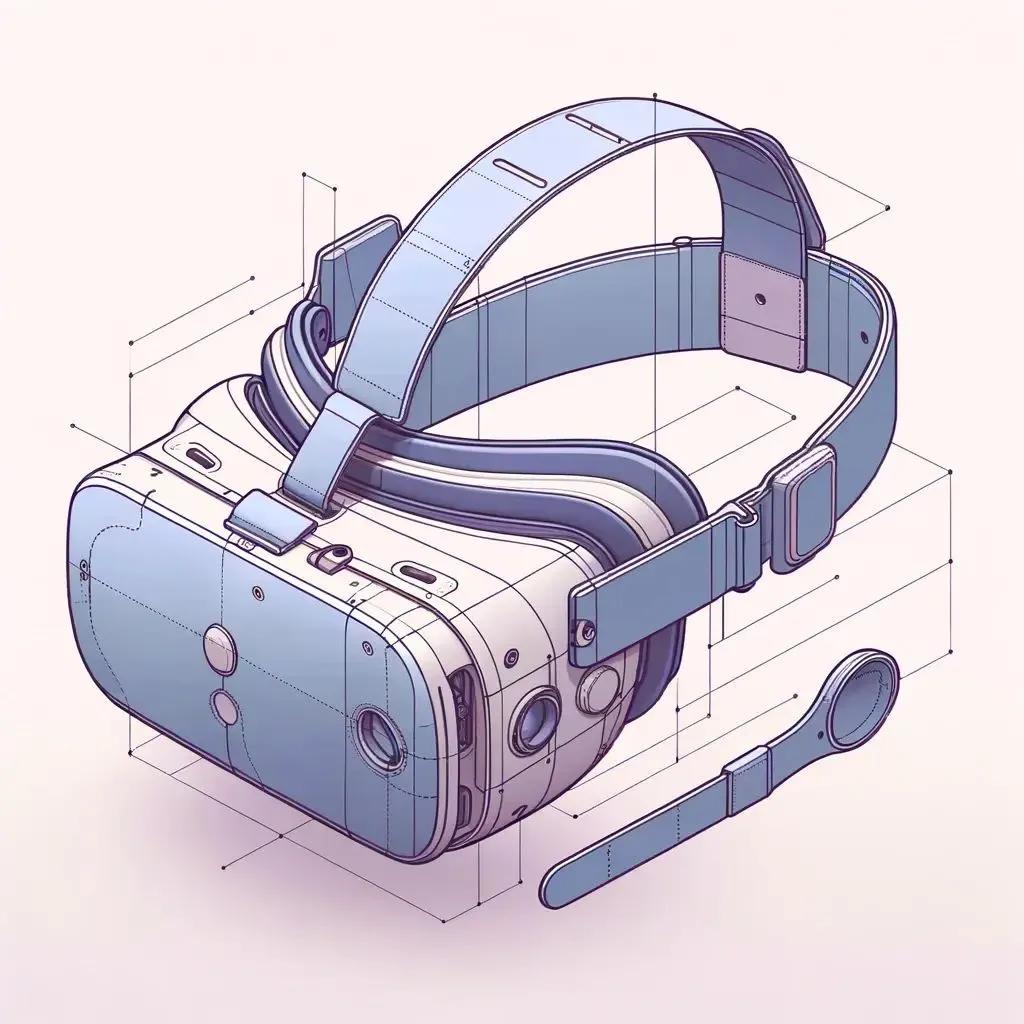
Informed by Immerzed
How do VR goggles work?
VR goggles are the gateway to digital worlds that appeal to our senses in a way that for a long time only seemed possible in science fiction. But how does this marvel of technology actually work? In this blog post, we explain the technology behind VR glasses in a simple and understandable way.
Screens and sensors - the core elements
At their core, VR glasses consist of a high-resolution screen that is divided into two parts - one for each eye. This division, together with special lenses placed between your eyes and the screen, creates a stereoscopic 3D view. This technique mimics how we see in the real world, with each eye receiving a slightly different image, which helps our brain interpret depth and distance.
Motion sensors and cameras are used to track head movements and adjust the visible image section accordingly. There are two different approaches here: There are headsets that have appropriate sensor technology built in internally. This can then "observe" the surroundings and register tilt angles, from which the glasses then calculate the head position. This method is also known as inside-out tracking.
Standalone vs. tethered headsets
There are two main types of VR headsets: standalone and tethered. Standalone headsets, such as the Oculus Quest, are devices that come with everything needed for virtual reality. This includes not only screens and sensors, but also all the hardware such as processors and memory. They are therefore wireless, user-friendly and perfect for beginners. One disadvantage, however, is the limited computing power, which is why software on standalone devices usually has a lower graphics quality.
Tethered headsets, such as the HTC Vive or Oculus Rift, on the other hand, offer a deeper, more graphically sophisticated VR experience. They require a connection to a powerful PC to work, which makes them slightly less accessible but ideal for hardcore gamers and enthusiasts. The connection is made via cable, but is now also increasingly possible via local Wi-Fi over the air. As a hybrid solution, some standalone glasses can also be used as PC VR headsets via streaming.
Operating options: Controller and hand tracking
There are two main methods of interaction in VR: controllers and hand tracking. Most VR systems come with special controllers that transmit the movements of your hands and fingers into the virtual world. These controllers have buttons, triggers and joysticks that are similar to classic console controllers.
A more recent, pioneering development is hand tracking. Some VR headsets can now use sensors to detect hands and fingers without a controller and translate their movements directly into the virtual environment. This creates an even more immersive experience, as virtual objects can be interacted with in the same way as in the real world. Criticism is often leveled at the lack of haptic feedback and sometimes imprecise sensing, but the technology has continued to evolve since its implementation. It can therefore be assumed that hand tracking will make great qualitative leaps in the future and become the input method of choice in many areas.
Using VR professionally
VR goggles are impressive pieces of technology that allow us to immerse ourselves in digital worlds that are so realistic that they blur our perception of reality and fiction. But this doesn't have to be just a gimmick for gamers. VR headsets are increasingly being used in work and teaching environments, as they are immersive, low-risk, flexible and cost-effective.
We develop professional VR software that opens the door to the same advantages in the training of emergency medical personnel. If you are interested in integrating virtual reality into your training concept, you can request a free demo using the form below and see the benefits and possibilities for yourself.
Further Links
- The backgrounds and history of VR: Informed by Immerzed: The history of virtual reality | Immerzed
Your Free Demo
Secure your non-binding demonstration appointment and dive into the metaverse of emergency medicine. Simply fill out the form and we will get in touch with you.
